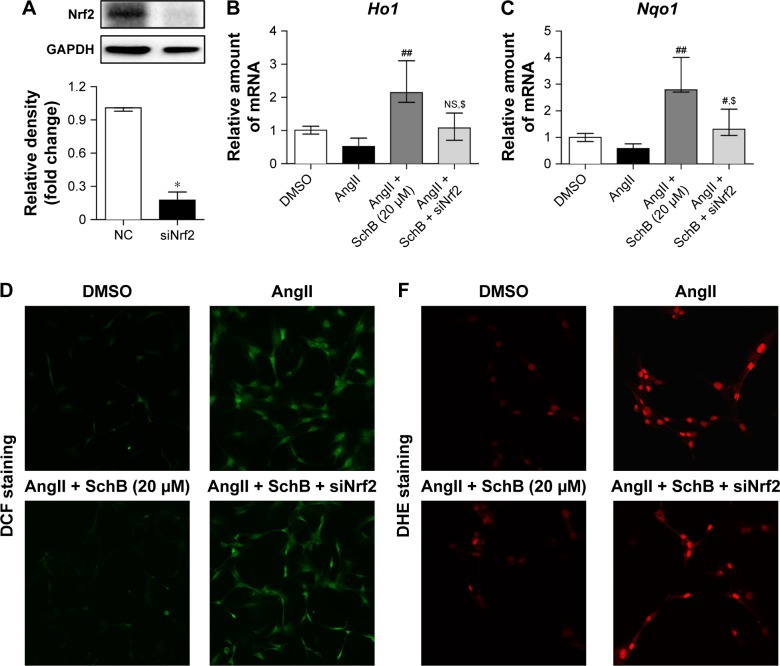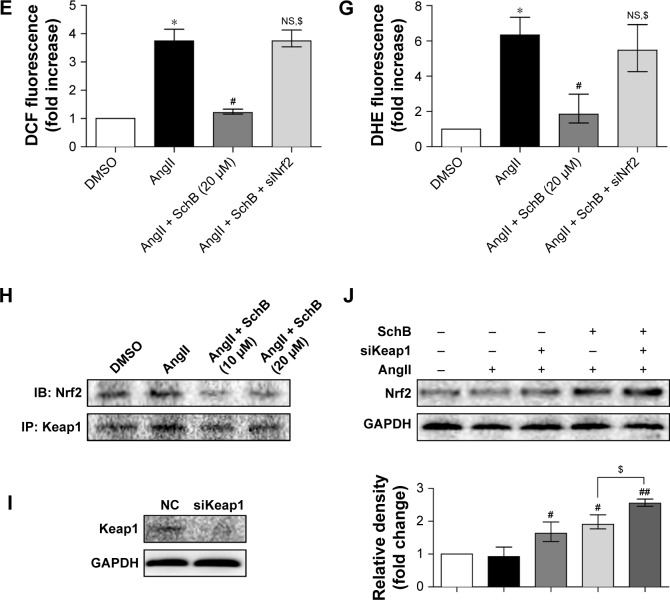Figure 4.
Antioxidant effects of SchB involved modulation of the Keap1–Nrf2 pathway.
Notes: (A) Western blot analysis of Nrf2 following siRNA transfection in RAECs. *P<0.05 compared to NC. RAECs were pretreated with SchB (20 µM) for 1 hour and then incubated with AngII (1 µM) for the times indicated. (B, C) After exposure to AngII for 6 hours, RT-qPCR detected the effect of Nrf2 knockdown on AngII-induced Ho1 (B) and Nqo1 (C) mRNA levels. After exposure to AngII for 12 hours, the effect of Nrf2 knockdown on AngII-induced ROS generation was determined by DCF (D) and DHE (F) staining, followed by semiquantitative analysis (E, G). (H) SchB reduced interaction between Nrf2 and Keap1. RAECs were pretreated with SchB (10 or 20 µM) for 1 hour and then incubated with AngII (1 µM) for 30 minutes. Lysates were then subjected to Keap1 IP and Nrf2 measured. (I) Western blot analysis of Keap1 following siRNA transfection in RAECs. (J) IB analysis of Nrf2 following Keap1 knockdown. RAECs transfected with negative control or Keap1 siRNA were treated with SchB for 1 hour before 8 hours’ AngII stimulation. GAPDH used as loading control. *P<0.05 compared to DMSO; #P<0.05, ##P<0.01 compared to AngII; $P<0.05 compared to AngII + SchB. Magnification: 200× amplification (D and F).
Abbreviations: AngII, angiotensin II; DHE, dihydroethidium; DCF, 2’,7’ –dichlorofluorescin diacetate; DMSO, dimethyl sulfoxide; NS, not significant (compared to AngII); IB, immunoblot; IP, immunoprecipitation; NC, negative control; RAECs, rat aortic endothelial cells; RT, reverse transcription; SchB, schisandrin B.


